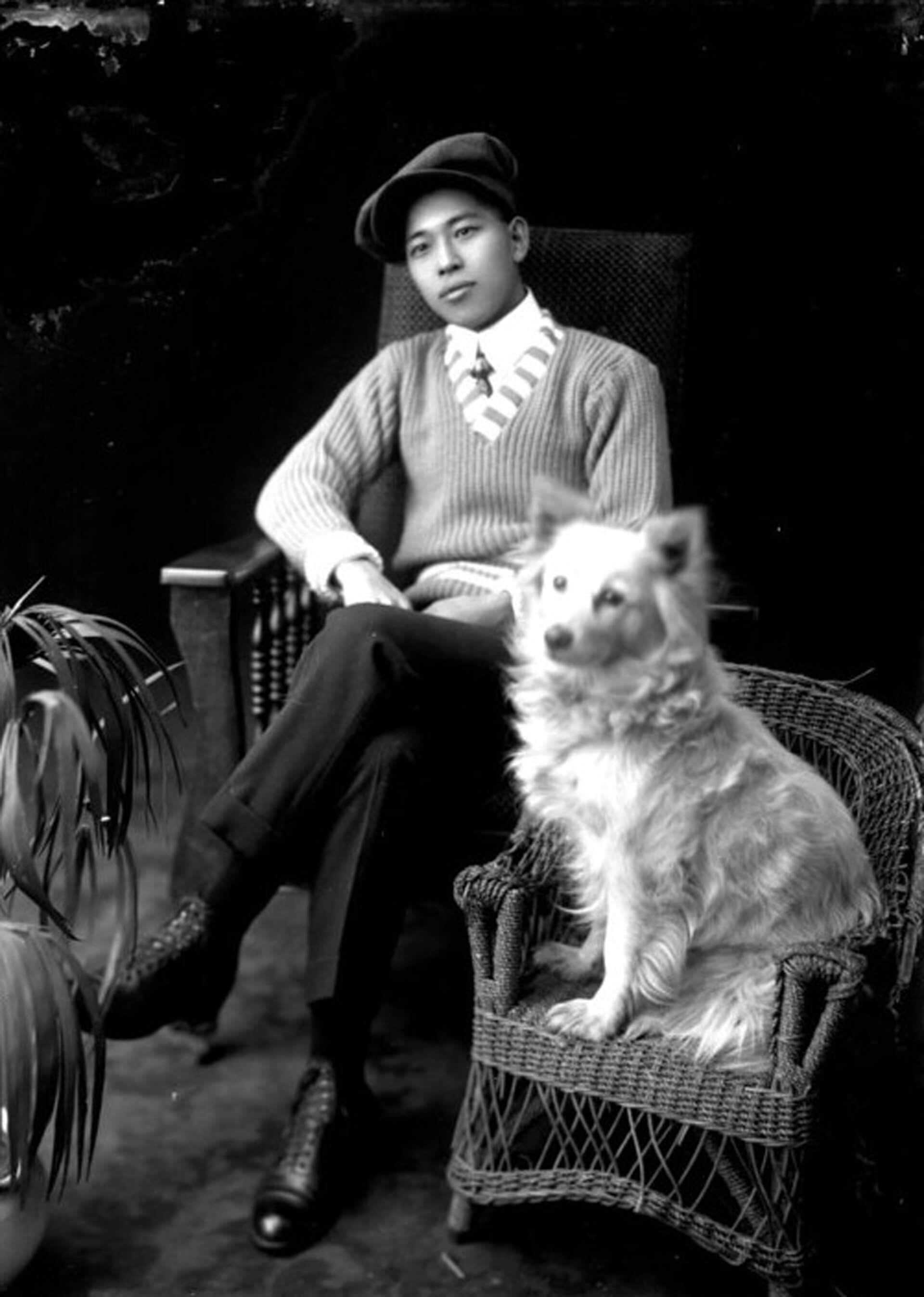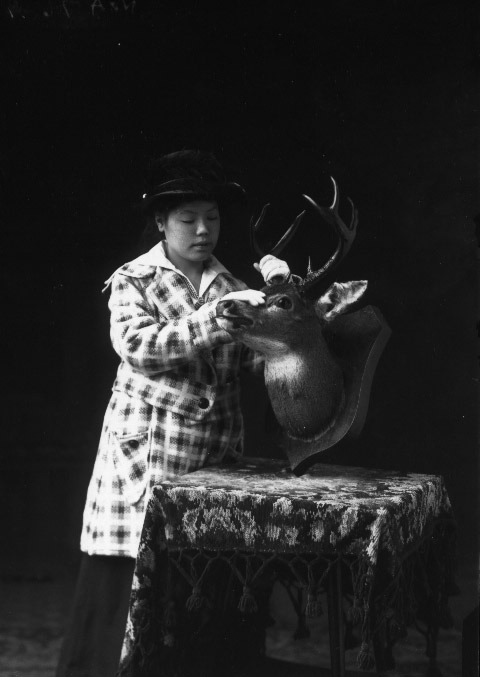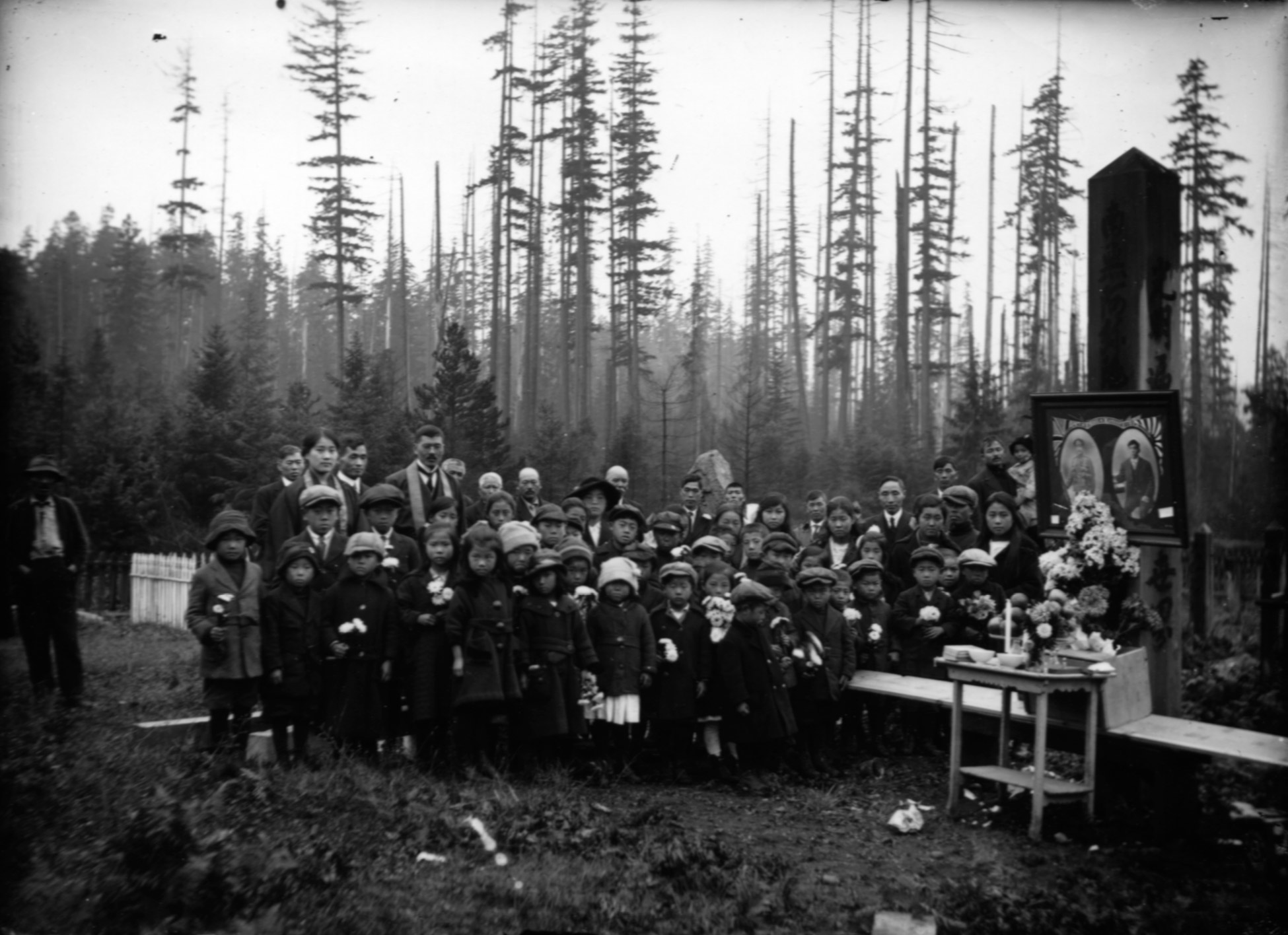Hayashi Studio (1911–1935, Cumberland, British Columbia)

Kiyoshi Shirimoto and his dog, date unknown
Digital print and scan from glass plate negative
Cumberland Museum and Archive
In this portrait created by the Hayashi Studio (1911–1935), a dapper young Kiyoshi Shirimoto sits confidently and comfortably with his dog nearby in its own wicker chair. It is a striking example of work by a studio that catered to mostly Japanese Canadian clients, who usually presented themselves in Western dress for elegant, technically accomplished portraits that they could send to family in Japan and save as family keepsakes. The studio’s archive offers rare insights into an early Japanese Canadian community as well as glimpses of the Chinese and Black communities living in Cumberland on Vancouver Island, the mining industry, and daily life in coastal British Columbia.


Senjiro Hayashi (1880–1935) was a Japanese-born photographer who immigrated to Canada in 1903 and apprenticed with Shuzo Fujiwara in Vancouver before moving to Cumberland, where he joined more than a hundred Japanese miners and their families who had lived and worked there since the early 1890s.1 Hayashi established his studio in Cumberland in 1912.2 Another photographer, today known only as Mr. Kitamura, took over the operation in 1919, and then Hayashi’s apprentice, Tokitaro Matsubushi, operated the business from 1923 to 1942.3
In addition to portraits, the studio provided photographic services off-site and served residents and visitors to Cumberland from outside the Japanese community. It closed temporarily during the 1930s before receiving a government commission to produce identification photographs for local Japanese Canadian residents during the Second World War. The studio closed permanently shortly before the government’s internment of Japanese Canadians in 1942. At that time, the government forced Japanese Canadians who were interned to leave behind all but a handful of possessions. This confiscated property was mostly destroyed, and when Japanese Canadians were released at the end of the war, many were pushed to settle farther east in Canada. However, the Hayashi Studio’s remarkable archive has been preserved by the Cumberland Museum and Archives.

 About the Authors
About the Authors
 More Online Art Books
More Online Art Books
 Acknowledgements
Acknowledgements